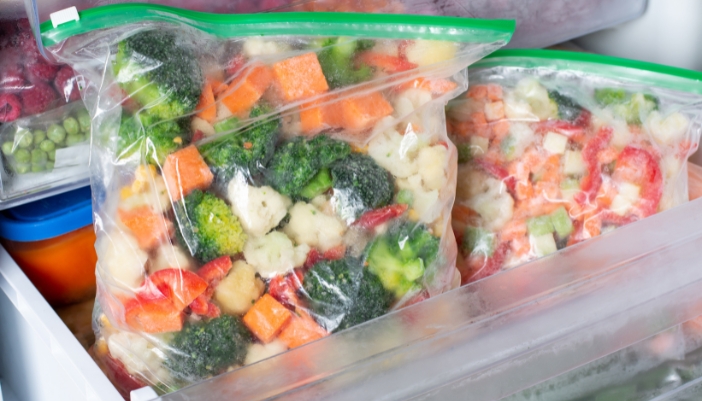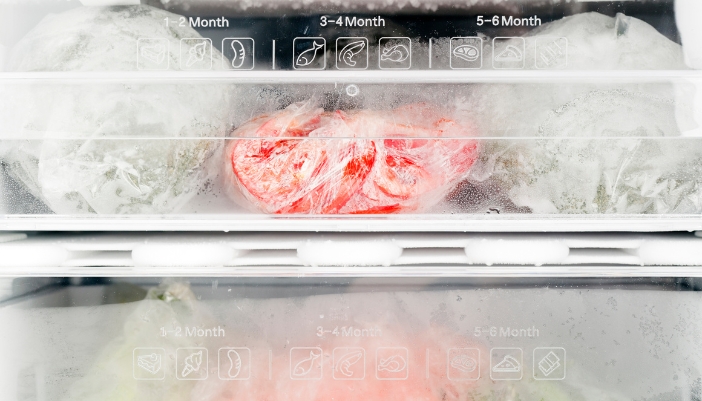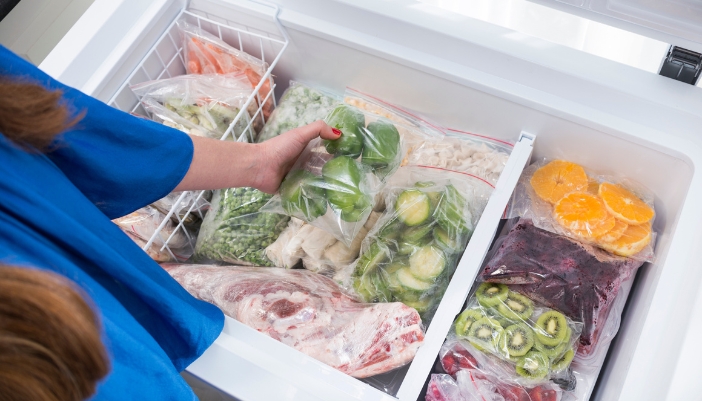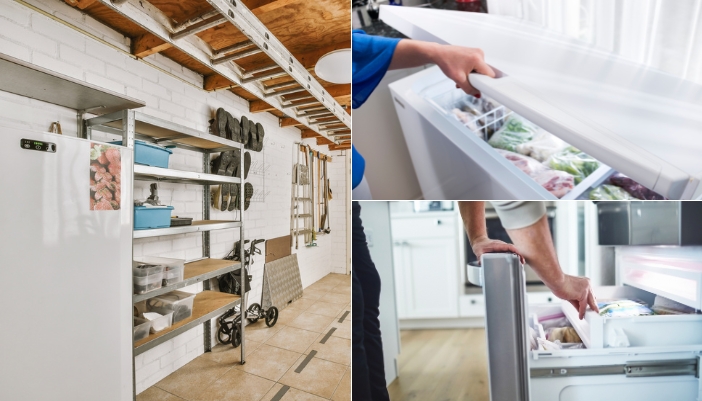Sometimes, grocery shopping can feel like a treasure hunt, especially when you stumble upon those bulk-buying deals that are too good to pass up. But once you’ve loaded up your cart and made it back home, the question arises: where do you put it all, and how do you make it last? The answer lies in your freezer.
Sure, that might seem like standard logic, but not all freezes are created equal — you need to know the secrets behind buying in bulk instead! Knowing the optimal settings and having the right equipment makes all the difference in preserving your food's taste, texture, and nutritional value!
But what are these secrets exactly? We’ll show you!
The Best Freezing Methods

When stocking up your freezer, not everything freezes with the same success — different foods require different preparation to make them freeze-ready!
- Fruits & Veggies: Berries, peas, corn, and chopped bell peppers can be frozen directly. But veggies like broccoli, green beans, and carrots require blanching to help preserve the color, texture, and nutritional value.
- Raw Meats: Beef, chicken, and pork should be wrapped tightly in freezer paper or plastic wrap and placed in a freezer bag. Remove as much air as possible to prevent freezer burn.
- Seafood: Fresh fish benefits from being wrapped in plastic, then aluminum foil, and finally placed in a bag. Use within the recommended timeframe for best quality.
- Baked Goods: Cool completely, then wrap in plastic, followed by foil to maintain freshness. Cookies should be frozen individually before transferring to a bag, while cakes can be frozen whole or in slices if wrapped in plastic.
- Prepared Meals: Cool completely before dividing casseroles and stews into portions, while pasta & rice dishes should be slightly undercooked to prevent mushiness when reheating.
Pro Tip:
Flash-freezing individual pieces of food (like veggies) on a tray before transferring them to a freezer bag can prevent clumping so that you can portion things out more easily later.
How Long Foods Can Stay Frozen

Freezing is like hitting the pause button on your food's freshness, but even in the cold, time still ticks — your food still has an expiration date. But when it’s frozen, it’s tough to tell when those dates should be, and you might throw out more food in doubt. So, to avoid that, always go by these general tips:
- Fruits & Veggies: Most can last up to 8 to 12 months. Just remember to use airtight containers or freezer bags to lock in the freshness.
- Beef: Steaks and roasts can last 6 to 12 months, but ground beef should be used within 3 to 4 months to maintain quality.
- Chicken: Whole chickens can be frozen for up to a year, while chicken parts are best used within 9 months of freezing.
- Pork: Like beef, pork cuts like roasts can last 4 to 12 months in the freezer. However, ground pork is best used within 3 to 4 months, like ground beef.
- Seafood: Fatty fish like salmon lasts 2 to 6 months, while leaner fish can be frozen for 6 to 8 months. Shellfish vary by type but generally keep for 3 to 6 months.
- Baked Goods: Bread, cookies, and cakes maintain their deliciousness for 3 to 6 months. Double wrapping in plastic wrap and then foil can help retain their texture and taste.
- Prepared Meals: Casseroles, soups, and stews last 2 to 3 months. Be sure to cool them completely before freezing in airtight containers.
Pro Tip:
Freezer burn is a menace, so wrap food in double layers of foil or wrap and invest in quality freezer bags. And don’t forget to label the freezing date clearly!
Optimal Freezer Settings for Storage
The secret to extending the shelf life of your frozen treasures lies not just in how you pack them but also in mastering the settings of your freezer. For optimal preservation, your freezer should be set at 0°F (-18°C) or lower to halt bacterial growth and keep your food safe and fresh for longer.
While most freezers don't offer humidity control like refrigerators, managing moisture is crucial, so always use airtight containers and moisture-proof wraps to protect your food from freezer burn and dehydration.
How to Organize Your Freezer

Do you ever dread digging through your freezer to find what you need? That’s usually the result of trying to make all your food fit however it can. But don’t worry; it happens, and thankfully, it’s easy to remedy with a little organization!
- Rotate Stock with FIFO: Implement the "First In, First Out" principle by placing newer items behind older ones. This encourages using items in order of their freezing date, minimizing waste.
- Divide and Conquer: Assign areas of your freezer for different categories like meats, veggies, and desserts. This organization makes finding what you need quicker and prevents flavor transfer between items.
- Label Clearly: Every item should have a clear label with what it is and when it was frozen. This simple step can save you from the mystery meal dilemma and helps track storage times.
- Square Off: Opt for square or rectangular containers for storage. These shapes stack more neatly and efficiently than round containers, allowing you to fit more in your freezer.
Choosing the Right Freezer

Selecting the ideal freezer for your bulk buying needs involves balancing the size, type, and functionality.
- Upright Freezers stand tall and offer shelves and compartments for organized storage, which makes it easier to find items without digging around. The design is compact, so they’re easier to fit in homes.
- Chest Freezers offer more storage space and efficiency and are better insulated, but they require more floor space and manual defrosting. However, they generally maintain lower temperatures more easily, ideal for long-term storage.
- Standard Refrigerators with Freezer Compartments are suitable for daily use and smaller bulk purchases. They keep items accessible and are space-efficient for smaller kitchens.
Choosing the best freezer for your bulk buys is crucial, so assess your space, consider how you’ll use it, and keep an eye out for energy usage — newer upright models have general energy ratings! But regardless of what you're aiming for, you’ll be sure to find the freezer to handle all your bulk buys at Rice’s Appliance & Bedding Center! We carry a wide selection of top brands and the latest cooling features, so you’ll be prepared for anything!
And if you need help finding the best fit for your home, our experts are always on hand — just pop in or give us a ring!

